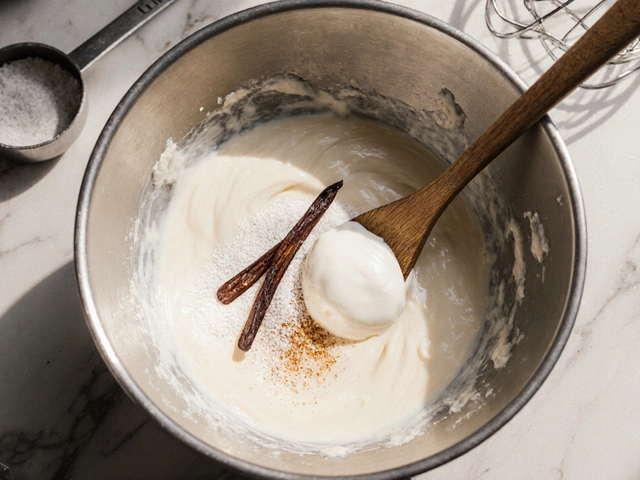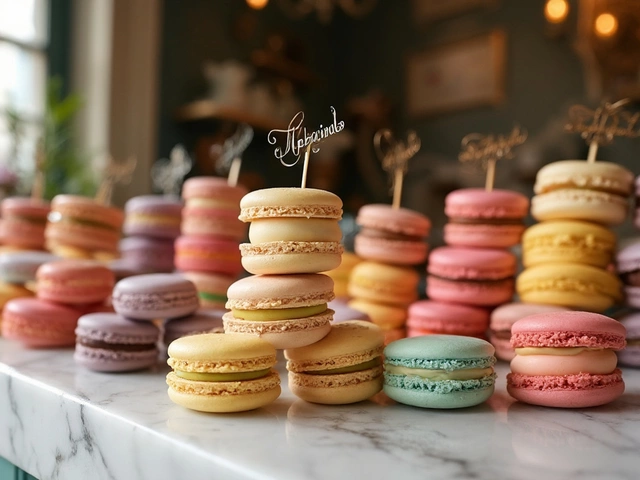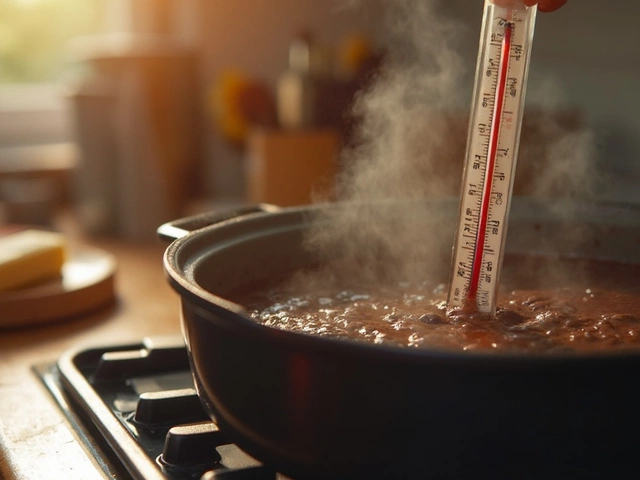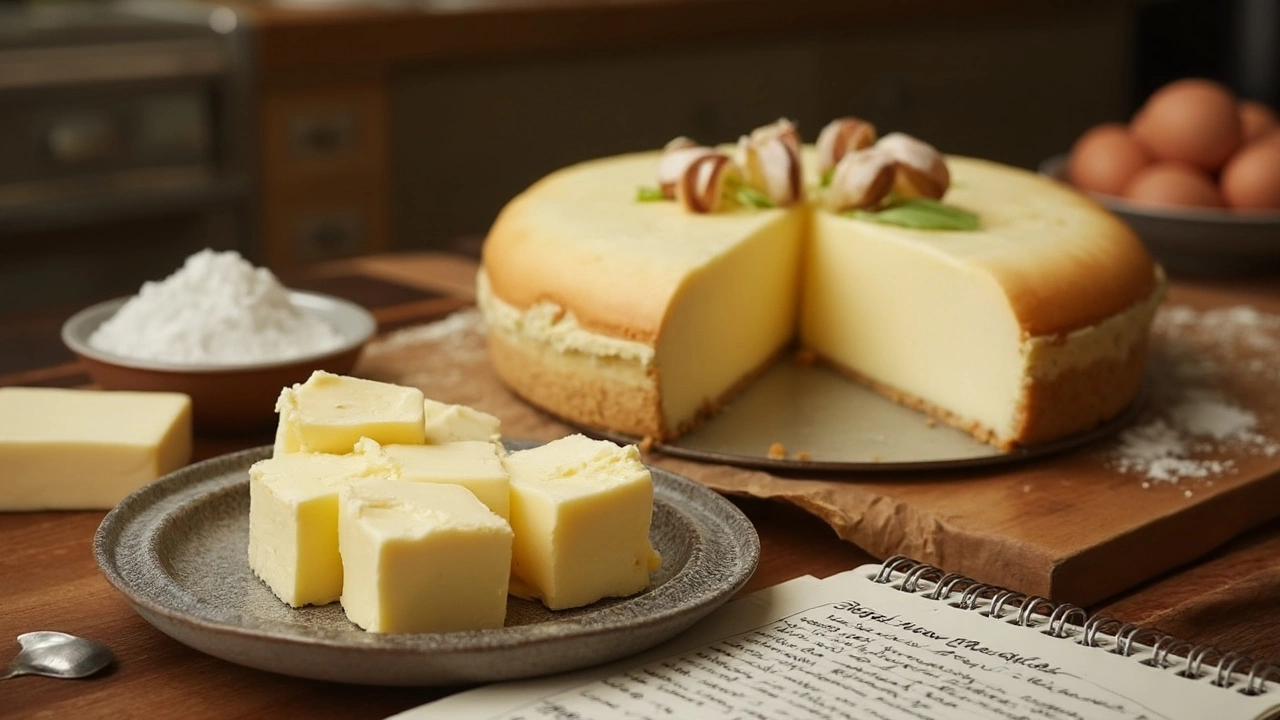
Ever wondered if that stick of butter you grab for cheesecake actually matters? Turns out, it totally does. The right butter can mean the difference between a ho-hum base and that rich, melt-in-your-mouth texture everyone fights over at family dinners.
When you’re choosing butter for a classic cheesecake, you’re mostly using it in the crust. But here’s the kicker—a lot of what makes a cheesecake taste amazing comes down to tiny details like if your butter is salted or unsalted, and how fresh it is. Pick the wrong one, and your crust might turn out greasy or bland.
If your cheesecake recipes sometimes feel a little off, your butter might be the problem. Want a crisp, flavorful base that holds everything together? You need the right butter, and it's not just about price. There are a couple of easy tricks and some insider advice that can take your next cheesecake from “pretty good” to “people-can’t-stop-talking-about-it.”
- Does Butter Type Matter in Cheesecake?
- Salted vs. Unsalted: Which Wins?
- How Quality Butter Changes the Game
- Picking the Best Butter for Different Cheesecake Crusts
- Smart Butter Tips for Cheesecake Perfection
Does Butter Type Matter in Cheesecake?
Absolutely—when it comes to cheesecake, the type of butter can change almost everything about your results. The fat and moisture in butter stick together all the crumbs in the crust, and they play a big part in the flavor.
Let’s be real—at the store, you’ll usually find salted and unsalted butter, and sometimes fancy European or organic butters. Each type has its own fat content and water percentage. That basically means your crust could end up dry, perfectly balanced, or straight-up soggy depending on what you choose.
- Unsalted butter is the go-to for most recipes since it lets you control the salt exactly. Plus, the flavor is milder and there are no surprises.
- Salted butter is good if you like a little extra flavor kick, but it can mess with the balance in sweet desserts. Sometimes salted butter has more water too.
- European butter (like Kerrygold or President) cranks up the fat, giving you a richer, flakier base. This butter is usually creamier and tastes bolder.
Now, let’s look at why all this matters. Higher butterfat equals a sturdier crust that doesn’t fall apart when you cut into it, and more flavor packed into every bite.
| Butter Type | Butterfat (%) | Typical Use |
|---|---|---|
| Unsalted | 80-82 | Classic cheesecakes, delicate desserts |
| Salted | 80-81 | Quick home desserts, savory bakes |
| European Style | 82-85 | Extra rich or gourmet cheesecakes |
The bottom line? If you want your crust to actually taste good and hold together, picking the best butter for cheesecake isn’t just about grabbing whatever is on sale. Think about flavor, texture, and fat content—because the type you use can level up even a simple recipe.
Salted vs. Unsalted: Which Wins?
Run a poll among home bakers, and you’ll see heated debates over using unsalted butter versus salted butter in cheesecake. Most professional recipes call for unsalted butter, and there’s a good reason. Unsalted butter gives you total control over how salty your cheesecake turns out. Processed salted butter can vary a lot in saltiness—some sticks can have double the salt of others, which can mess with the flavor of both the crust and the filling.
Here’s a quick fact: one stick (113g) of American salted butter usually has between 1/4 and 1/2 teaspoon of salt, depending on the brand. With unsalted butter, you always know exactly how much you’re adding since you put in the salt yourself. That’s why, if you crack open cookbooks by Ina Garten or even the team at America’s Test Kitchen, you’ll see them always lean unsalted for desserts.
"If you want your baked goods to taste the way a recipe developer intended, always use unsalted butter and add salt to taste. It’s all about control and consistency." — Stella Parks, pastry chef and cookbook author
There’s another reason pros avoid salted butter for cheesecake. Salted butter usually sits longer on grocery store shelves. That extra salt masks the taste of older dairy, so sometimes you end up with butter that’s not as fresh. Cheesecake really benefits from the clean, milky taste of good, fresh butter—so using unsalted almost always pays off unless you just love a saltier, tangier bite.
But what if you only have salted butter in the fridge? Don’t panic. Just remember to cut back or skip any extra salt in your recipe. Here’s a cheat sheet to help:
| Butter Type | Salt Content (per stick) | Best For |
|---|---|---|
| Unsalted | 0g | Precise flavor control, fresher taste |
| Salted | 0.5g - 1g | Quick swaps, salt-forward desserts |
Quick tip: If you can, always pick European-style unsalted butter for cheesecake—think Plugra, Kerrygold, or Président. It’s higher in fat, lower in water, and makes your crust and filling richer and creamier. But even plain store-brand unsalted butter will serve you better than random salted sticks.
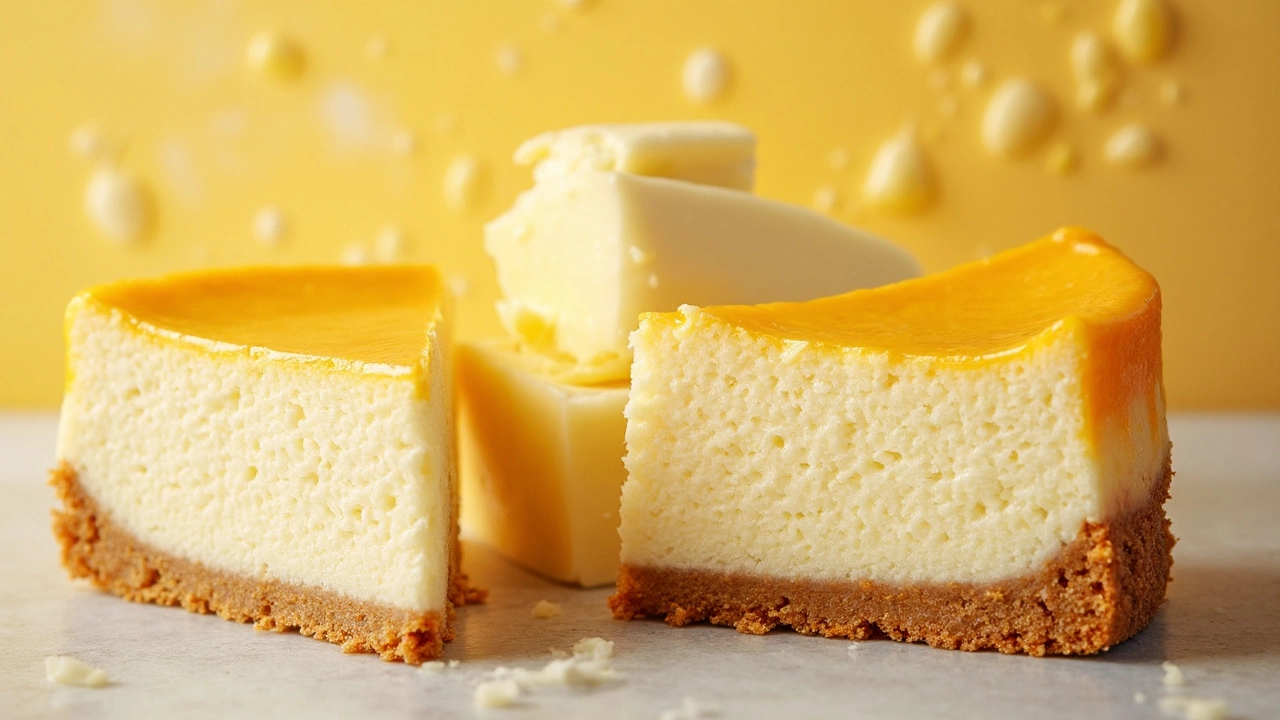
How Quality Butter Changes the Game
If you’ve ever wondered why some cheesecakes taste like a bakery dream and others fall flat, check the butter first. Quality butter isn’t just hype—it actually has more butterfat, which makes a richer, more velvety crust. A lot of supermarket butters hover around 80% butterfat, but premium brands or European-style butters bump that up to about 82-85%. It might sound tiny, but that extra couple of percent really changes the texture and flavor punch.
Cheaper butters often come with more water content. That’s bad news for cheesecake. Too much water in your butter can turn your base soggy or make it fall apart. It can also water down the taste. Higher-quality butters just don’t do this—they keep your crust tight and the flavor buttery.
Here’s a quick comparison to lay it all out:
| Type of Butter | Butterfat (%) | Water Content (%) | Effect on Cheesecake |
|---|---|---|---|
| Standard US Butter | 80 | Up to 18 | Decent texture, mild flavor |
| European-Style Butter | 82-85 | Less than 16 | Richer taste, smoother crust |
| Cheap Store Brand | 80 or lower | 18 or higher | Crust gets soggy, muted flavor |
If you want that signature rich flavor and a crust that actually holds its shape, go for a quality butter. And don’t stress about imported stuff unless you really want to impress—some U.S. brands like Plugrá or Vermont Creamery do the job just as well as Irish or French butters. If there’s one thing to remember, it’s that higher butterfat = better cheesecake.
Always check the label for the butterfat percentage, especially if you’re baking for a special event. A few bakers say they get more compliments on their cheesecakes just by switching to better butter—no fancy tricks, no new recipe. It’s a small change, but it can take your best butter for cheesecake hunt to a whole new level.
Picking the Best Butter for Different Cheesecake Crusts
Okay, here’s where things get real. Not all cheesecake crusts are the same—and neither is the butter you should use. If you’re sticking with the classic graham cracker crust, chase after unsalted butter. This lets you control the saltiness, so your crust never tastes off. For those cookie-based crusts (think Oreos or digestive biscuits), unsalted still usually wins, but if you like a punchier flavor, a half-and-half mix of salted and unsalted can work.
The amount of butter matters, too. For a typical 9-inch cheesecake, you'll use around 5 tablespoons. Too much, and your crust goes soggy. Too little, and it won't hold together. Here's a quick look at recommended amounts:
| Crust Type | Butter Type | Amount (for 9-inch crust) |
|---|---|---|
| Graham Cracker | Unsalted | 5 tbsp |
| Oreo Cookie | Unsalted (or mix* | 5 tbsp |
| Digestive Biscuit | Unsalted (mix if desired) | 5 tbsp |
| Shortbread | Unsalted | 4–5 tbsp |
*Some bakers blend in 2–3 tbsp of salted butter for extra flavor with cookies, but it’s all about your taste buds.
Not sure which way to go? Try a side-by-side bake. Grab two mini springform pans and test a batch with each butter—salty versus plain. It’s a little extra effort, but you’ll end up with the flavor that actually clicks for you.
If you want to level up, check the fat content on that butter box. European-style butter (like Plugrá or Kerrygold) usually has 82% or more milk fat, compared to the typical 80% in regular American butters. Want a richer, more decadent crust? Swap in the Euro-style stuff.
"One small butter tweak changes the whole dessert. Higher-fat butters give you a crust that’s crisp and never greasy—totally worth tracking down for special cheesecakes." – Chef Nicole Rees, pastry coach
Remember, the best butter for cheesecake is usually fresh, high quality, and fits your crust style. Don’t be afraid to play with brands and fat percentages until you land the taste that makes you want to eat the crumbs off the pan (no judgment here).
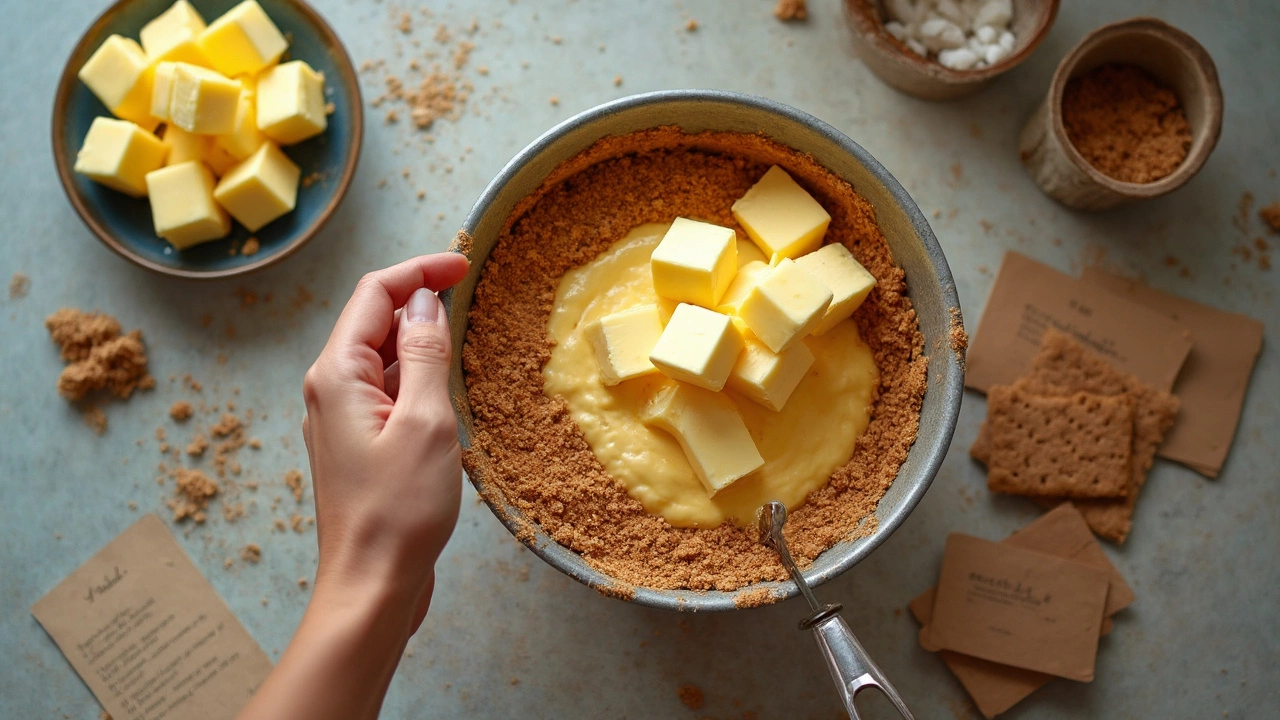
Smart Butter Tips for Cheesecake Perfection
If you want to up your cheesecake game, nailing the butter part is a must. Fumbling this step can affect the whole vibe—from how your crust holds up to the final taste on your tongue. Here are some hacks and facts the pros swear by.
- best butter for cheesecake is always unsalted. This gives you full control over the salt level in your recipe, so nothing tastes off or too salty. Most bakery pros use unsalted for this exact reason.
- Room-temp butter blends way better with crushed cookies or graham crackers. Cold butter just clumps up and unevenly mixes, which can make parts of your crust soggy.
- Good butter isn’t just about brand. Check the fat content—European butters usually have about 82% fat, while standard US brands are around 80%. That tiny difference impacts how rich and tender your crust turns out.
- If you love a crisp crust, pre-bake the crumb-base after mixing with melted butter. Eight minutes at 350°F (about 180°C) does the trick, letting the fat set and keeping the crust from turning mushy under the filling.
- Don’t skimp on butter, but don’t drown the crumbs in it either. Too much butter can make a greasy base, too little makes it fall apart. A good rule is about 5 tablespoons (70g) for every 1 1/2 cups (150g) of crumbs.
If you’re curious how much this really matters, take a look at what happens depending on butter choices:
| Butter Type | Fat Content (%) | Typical Crust Texture |
|---|---|---|
| Standard US Unsalted | 80 | Moderately crisp, mild flavor |
| European Style Unsalted | 82 | Extra rich, slightly more tender |
| Salted Butter | 80-82 | Can taste salty, less control over flavor |
Bakers also recommend adjusting your crumb-to-butter ratio if you switch up the type of cookie or cracker. Oreos, for example, need less butter than graham crackers because the filling already adds fat.
One last thing: store your butter properly. If it sits near onions or strong-smelling foods in the fridge, it can soak up those odors faster than you'd expect. No one wants an onion-scented cheesecake.



